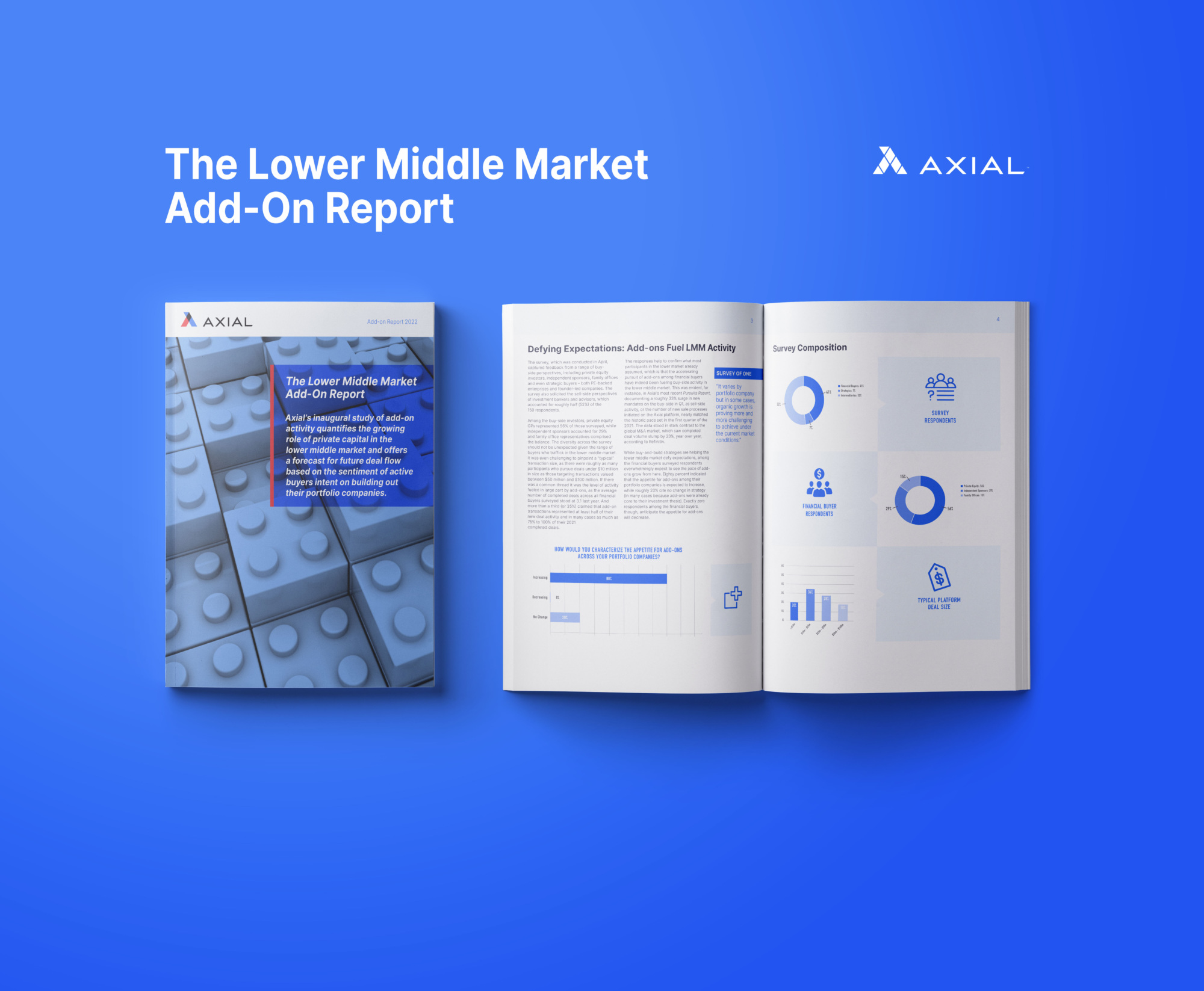
Introducing The Lower Middle Market Add-On Report
A survey of 150 deal professionals across the Axial network documents the extent to which financial sponsors have descended upon…
Tags
Editor’s Note: As the new year begins, dealmakers naturally ponder what’s to come. In Part 3 of this Forum series, we are here to share two more major trends for 2018, following The evolution of deal sourcing, and Technology moves private capital markets forward. Read on to learn more, and you can download the entire report here.
The concept of limited partners investing directly is not new. Of course, limited partners (LPs) in Canada like the Ontario Teacher’ Pension Plan and Canadian Pension Plan Investment Board have always invested directly into companies to gain better economics. A few years ago, family offices increasingly began to invest directly, and today, traditional limited partners and financial advisory firms are looking to invest directly. For example, The California Public Employees’ Retirement System (CalPERS) is weighing its options. During the summer, the $323 billion pension fund said it would explore a direct investment program. CalPERS is the largest pension fund in the U.S. and private equity has been its best performing asset class for two decades, but still, the pension fund has faced criticism for paying high fees, which led the pension fund to review new strategies including investing directly.
“They are looking to avoid the 2 and 20, which is understandable. We have seen this in the past, but what many have found is that it’s hard to manage growth at the company level and some LPs just don’t have the experience of having been the control investor,” says Perkins.
While CalPERS and other larger pension firm and endowments rethink their investment strategies, money managers are doing the same. Baltimore-based Brown Advisory, for example, will pool together client funds to meet minimum LP requirements in larger funds as well as allow clients to diversify LP holdings. In addition, Brown will, on occasion, use pooled investor funds to directly invest into companies. In many circumstances, these investment opportunities have been sourced from their client base.
“We are seeing a lot of innovative structures from family offices and high-net-worth looking to invest in our deals,” says Lipson. “
There is a real desire from LPs to invest in the private equity sector outside of the traditional LP/GP fund structure.”
While the advantages seem clear of course there are challenges. “As alternative GP vehicles get created to fund one-off deals, LPs still need to underwrite the investment manager and get comfortable that the GP has the experience and expertise to create equity value. Private equity investing still requires a significant amount of active management,” says Lipson. LPs interested in becoming GPs will have to build out management teams to generate proper returns and that may prove difficult. “Senior management at certain large pensions do not seem to understand that there are huge differences in properly executing a direct private equity investment program and managing a publicly traded equity portfolio. Private equity is the ultimate active investment strategy, requiring the ability to not only target and purchase companies at the right price but also to oversee the management of a company at a detailed level and then properly direct an exit. To be successful they will have to make the commitment to hiring experienced private equity professionals – and retain them,” says DePonte. LPs going direct are less likely to impact the lower middle market because of how difficult it is to access. “We actually see the opposite. We have LPs coming to us saying you know the lower middle market and we don’t have the resources or the know how to access it. Can you help us?” says Kaplan.
Where private equity started and growth capital or venture capital ended used to be easily defined. However, times are changing. Once again as a way to gain a competitive advantage in today’s very competitive market many firms have changed their investment approach. In days past, firms that were once generalist firms—pouring over deals in various sectors—soon became sector focused firms— touting their in-depth knowledge of a particular sector in hopes of impressing potential targets. Now, some control buyout firms—that were positioned as firms that would only complete deals where they could take a majority ownership interest—have changed their tune. An increasing number of firms are now interested in pursuing growth equity deals as well. For example, at the end of December, Apax Partners closed on $1 billion for investment in growth-stage technology companies. The new fund will target minority and buyout investments in enterprise-technology and consumer Internet companies worldwide, aiming to deploy $30 million to $150 million of equity per deal.
Other buyout firms have recently done the same as Apax. For example, KKR & Co. secured $711 million for growth-equity investments in the technology, media and telecommunications sector in North America, Europe, and Israel.
Middle market firms are also getting in on the action. Firms like The Riverside Company, Huron Capital, and Balance Point Equity have all diversified to be more inclusive of various deal terms allowing them to cast their deal sourcing net much wider.
In 2017, Huron became more formalized about their non-control investment. In August, the Detroit, Michigan-based firm did its first non-control equity deal in Stay Online out of Huron Flex Equity. “There is a blurring between equity and growth equity. A non-control equity strategy can help a company grow faster than it could on its own. We started our formal non-control strategy in 2017 and the market has received it very well. It fills a hole in the market for businesses that would like a partner with firms that have access to operational resources and capital, but aren’t quite ready to give up all the control yet,” says Perkins.
According to Probitas Partners’ latest Private Equity Institutional Investor Trends for 2018 Survey, investing in growth capital funds is only behind U.S. middle market buyout funds and U.S. small market buyout funds as the sector of most interest among limited partners in 2018. “We have seen more and more growth capital over the past 10 years and that should continue. LPs are a lot more accepting of this strategy today because there is now a history of success,” says DePonte, who adds that investors now accept that if the proper negative controls are in place that you don’t need total control to be successful.
In addition to expanding investment opportunities, investing growth capital doesn’t rely on leverage, which can also be attractive.
As the lower end of the scale, there is a blurring line between late-stage VC and growth capital as well, but this really depends on sectors and is most likely to impact sectors like tech and life sciences, says DePonte.
Balance Point Capital, invests both debt and equity into lower middle market firms. “We have pivoted to this model very much so. It’s a way to get money out the door into a company. Your upside may be limited, but this approach is designed to protect your downside, which is nice at a time when valuations are so insane,” says Kaplan. “Flexibility is key.”
